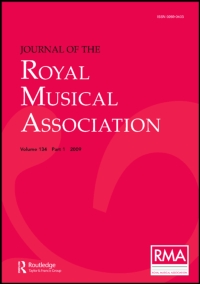Article contents
The Emotional Aspects and Sympathetic Effects of the Sister Arts — Poetry, Painting, and Music
Published online by Cambridge University Press: 01 January 2020
Extract
Ladies and Gentlemen,—The emotional aspects and sympathetic effects of the sister arts is the title of the paper which I have the honour of reading to you, but it has especial reference to the relationship of the sister arts— poetry, painting, and music. I need not say that any one of these three subjects would require a volume for itself, instead of a paper combining the three. It is therefore necessary that I should state at once the object I have had in view, namely, the throwing together of a few ideas interspersed with anecdotes when appropriate. I assign to music the position of the younger sister which she indubitably holds at the present day, but, in point of fact, in one sense, she is the elder sister, and as such I shall introduce her. I must ask you to define to yourselves this simple question—What is music? The answer must not be a preconceived idea or predilection, without a reason for your belief. A mighty river can be traced to its source, which may be a dripping rivulet; in like manner we must go to the fountain head, and trace music back to its primitive origin. What is music? To my mind music is a deviation from monotonous sound in its strict sense. If I hear the wild sounds which the wind capriciously elicits from the Æolian harp, and which can produce according to its force the softness of a child's slumber or the boisterousness of rage—this I call music. When I hear the gentle murmuring of a purling stream, the breaking of a wave on the seashore, the chirping of birds, or the echoing of a bell borne o'er the plain from distant hills—this I call music. If such be the case, then, music is the elder of the three sisters. Professor Tyndall shows that music differs from noise in that the sound entitled to the definition of a musical note is produced by regular and perfectly periodic vibrations, whereas noise is caused by an irregular succession of shocks. The shaking of a tool-box with its various metal contents can only produce a noise, because the shaking makes an irregular succession of shocks; but the drawing of a violin bow across a string produces music.
- Type
- Research Article
- Information
- Copyright
- Copyright © Royal Musical Association, 1884
- 1
- Cited by


